Jubilant! Amazed! Awed! Honored!
These are the words that come to mind as to the opportunity we have been afforded.
One of the workers at the home exchange house where we are staying, belongs to a temple in the regional capital of Gyanyar, about one hour away. This temple is holding an exceptionally rare ceremony today.
How rare?
Well, in the land of ceremonies where each day starts with offerings to the gods at one’s home temple, each village temple holds weekly and monthly ceremonies and the nine national temples hold ceremonies for major events, such as cremation and teeth filing, what constitutes a rare ceremony is one that occurs only… every thirty years!
Why every thirty years?
Because, as one of the warm and friendly priests explains to us, that’s when the “batteries have to be recharged”. Amused by his own modern explanation, he reveals that 5 key elements in the form of stones Panca Datu (brown stone, silver, gold, iron and ruby) emit a certain vibration. The stones are buried under the ground of the temple and their potency diminishes after 30 years.
Therefore, a 30 year cycle exist to remove the stones and replace with “fresh batteries”.
How are we able to attend this ceremony?
The tiny (and gorgeous) village where we stay has a famed puppeteer. His son is the driver for the host (of our home exchange) and he invited us to join the master puppeteer, his father, to attend the ceremony. This is a big deal! It is not at ALL a tourist type situation, in fact, there are no other visitors, let alone tourists or travelers.
This is the real thing ~ an authentic religious event, not for a public of onlookers, but for the religious attendees. And what an amazing religious and ritual-filled experience.
The ceremony is held at temple Pura Dadyia Taman Bali. The ceremony is called Karya Memungkah, Mupuk Pedagingan, Ngenteg Linggih, Penyegjeg Jagat, Pedudusan Alit Lan Pengusaban (the length of the name correlates to the rarity of the event).
The photos speak for themselves…
Anticipation in the first of three temple courtyards…
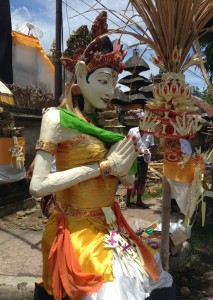 |
| Very large welcoming statue, covered with sarongs for the festivities. |
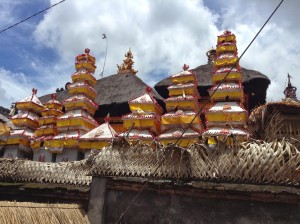 |
| The inner courtyards of the temple are behind the walls. The tiered shrine towers soar skywards. |
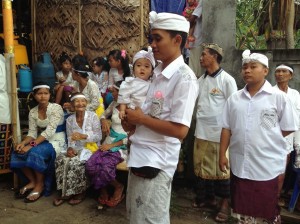 |
| A village of about 100 families getting ready for ceremony to start. Note the proud grandmother second from the left, watching as her son holds her grandson. Baby also has a headdress and small sarong wrapped around his waist. |
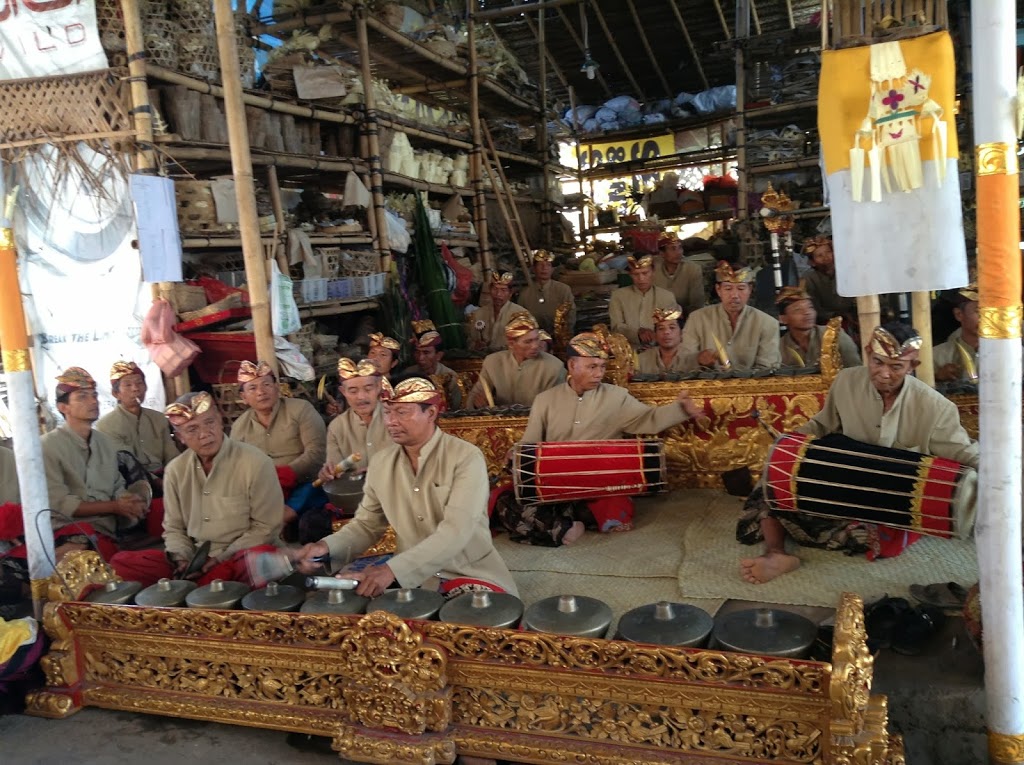 |
| The “gamelan” ~ musicians and percussion instruments: variety of drums, percussion instruments, starts up. |
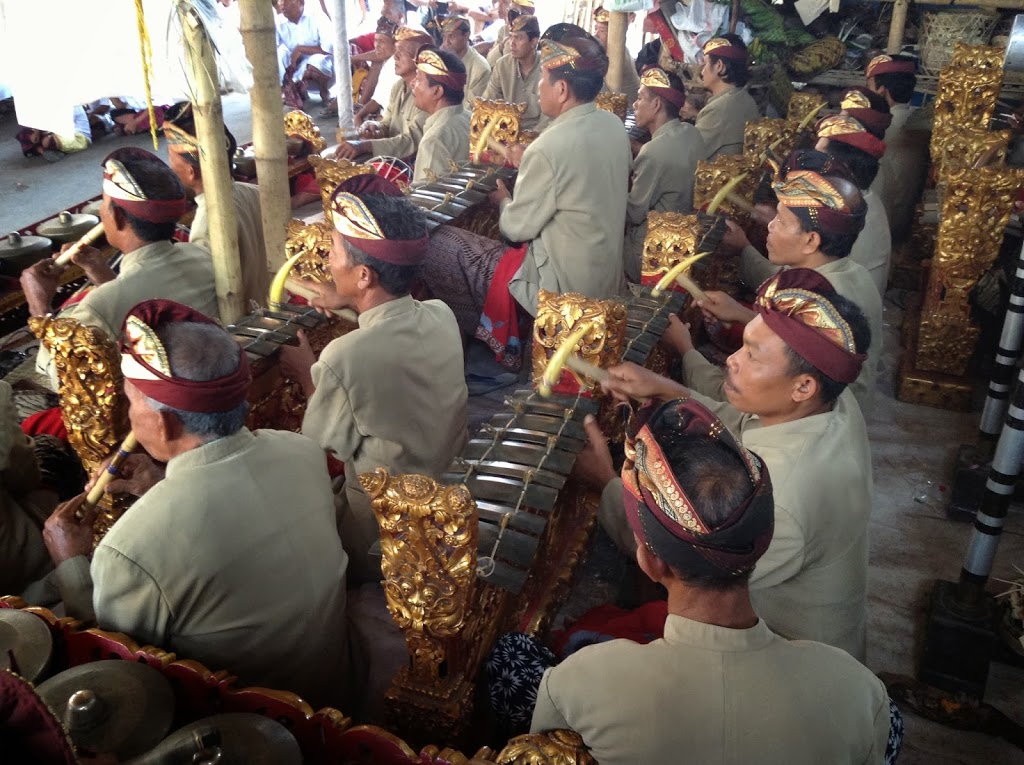 |
| The xylophone type instrument is hit with something that looks a bit like a hammer with narrow “head”. |
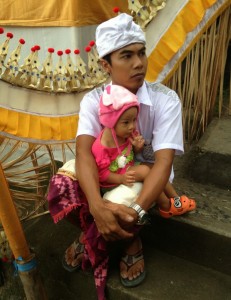 |
| Balinese father and son, awaiting start of ceremony |
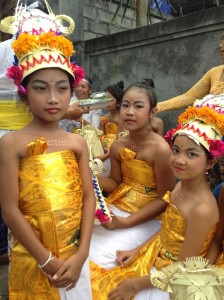 |
| Young girls in golden costumes, head dress, all made up, waiting for their role as dancers in the ceremony. |
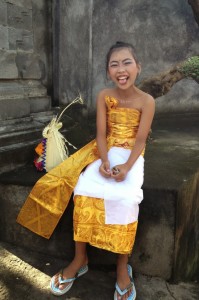 |
| One of the girls has a light-hearted moment before the dancing begins, for which the girls train hard in preparation. |
 |
| A young boy before his ceremonial sword fight |
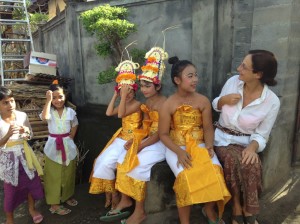 |
| Peta chats with the girls while they wait for their dances to begin. |
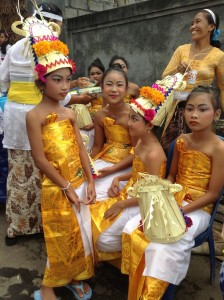 |
| A reflective moment. |
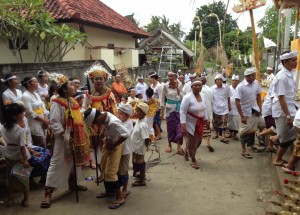 |
| There is an air of excitement as families await the start of the ceremonial festivities. |
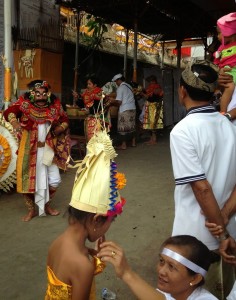 |
| A mother checks her daughters make up, while a “topeng” dancer begins his dance. |
 |
| The costume and leg wear of the monster dancer is very festive, elaborate and bright. |
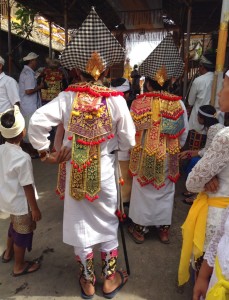 |
| Young male sword fighters waiting to begin their performance. |
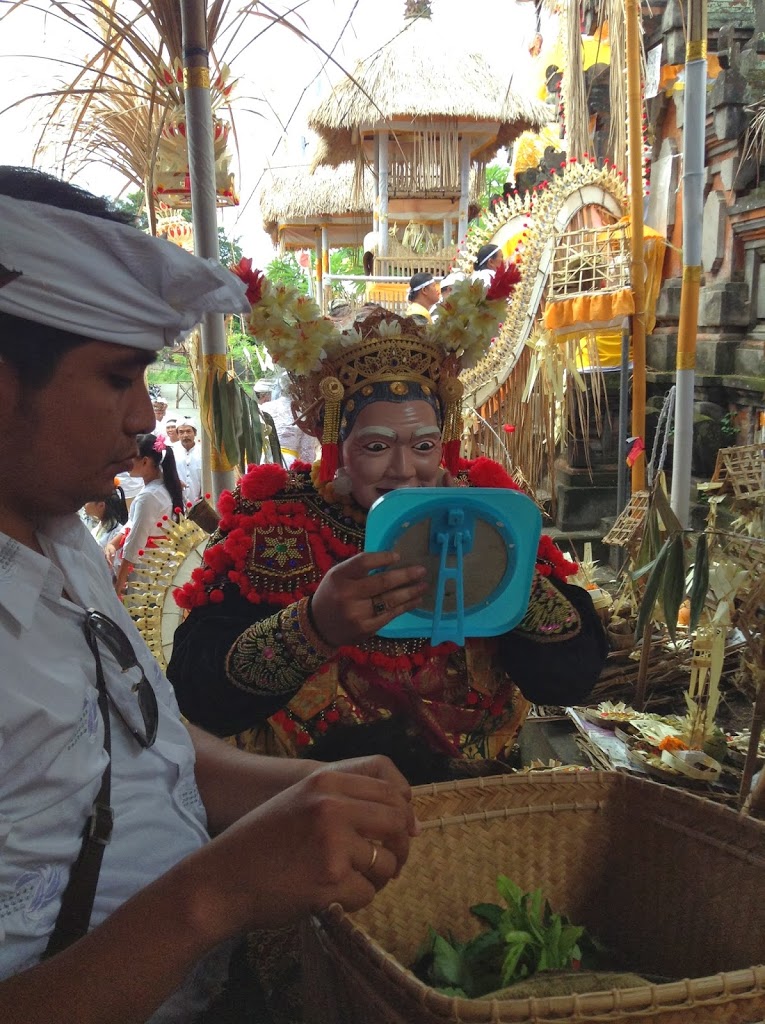 |
| Final mirror check for mask and head-dress.. |
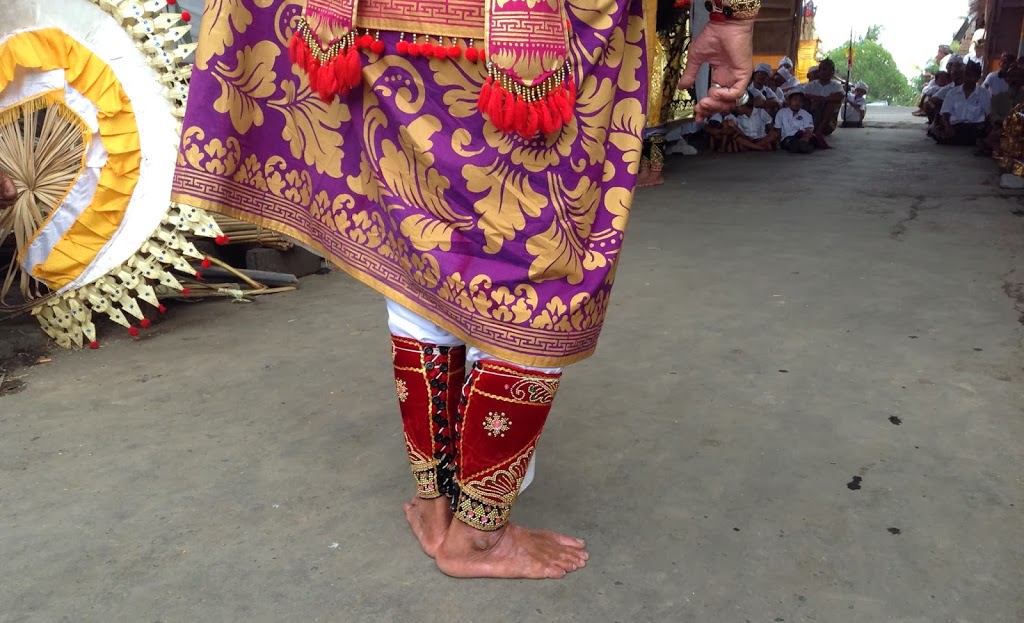 |
| The foot and hand movements of Balinese dancers are very specific conveying a variety of meanings depending on the gesture. |
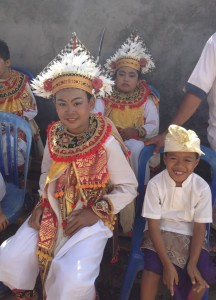 |
| A few young boys relax now that their performance is behind them. |
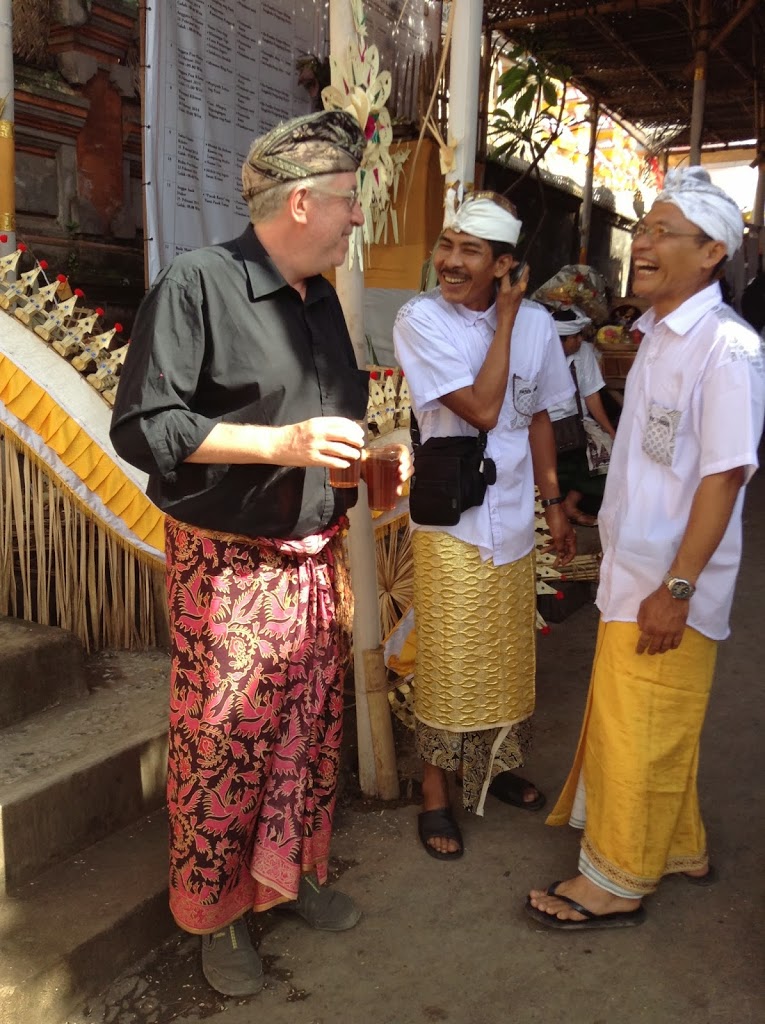 |
| Ben looking smashing in his ceremonial outfit, chatting with 2 of the men. |
Middle courtyard – the puppet master tells the tale of Mahabarata, prayers led by the head priest
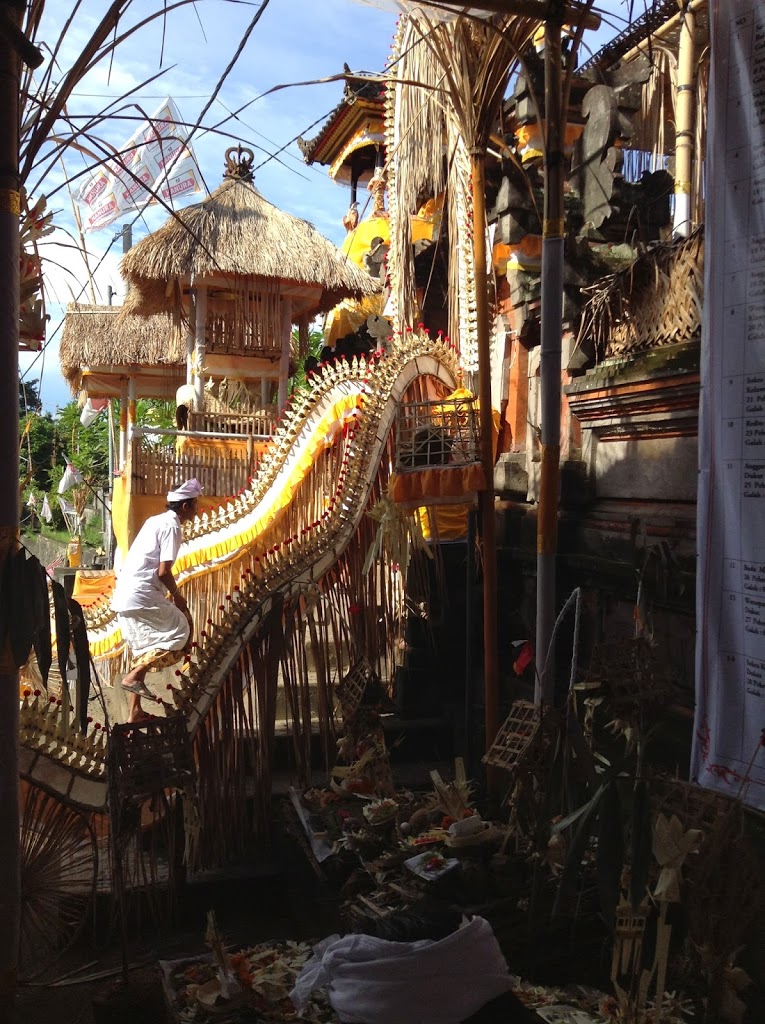 |
| The stairs to the temple are intricately decorated with woven bamboo and flowers. |
 |
| Young and old start to enter the temple. The women traditionally wear lacy shirts with a tied scarf over their sarongs. Typically members of a family wear same colored sarongs. |
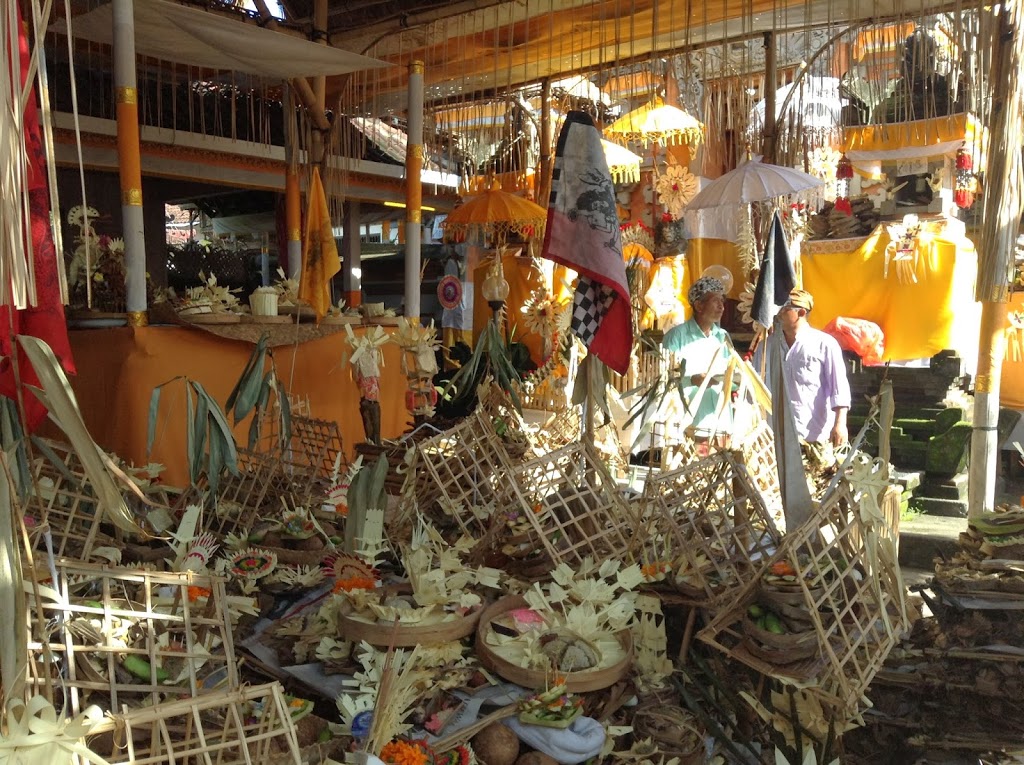 |
| The center of the temple has offerings of flowers, woven structures filled with cooked chickens, rice, incense and decorations. People in the community have been bringing their offerings to the center of the temple for hours before and during the ceremony. The offerings take hours and hours of work to assemble ahead of time, by the women in the community. |
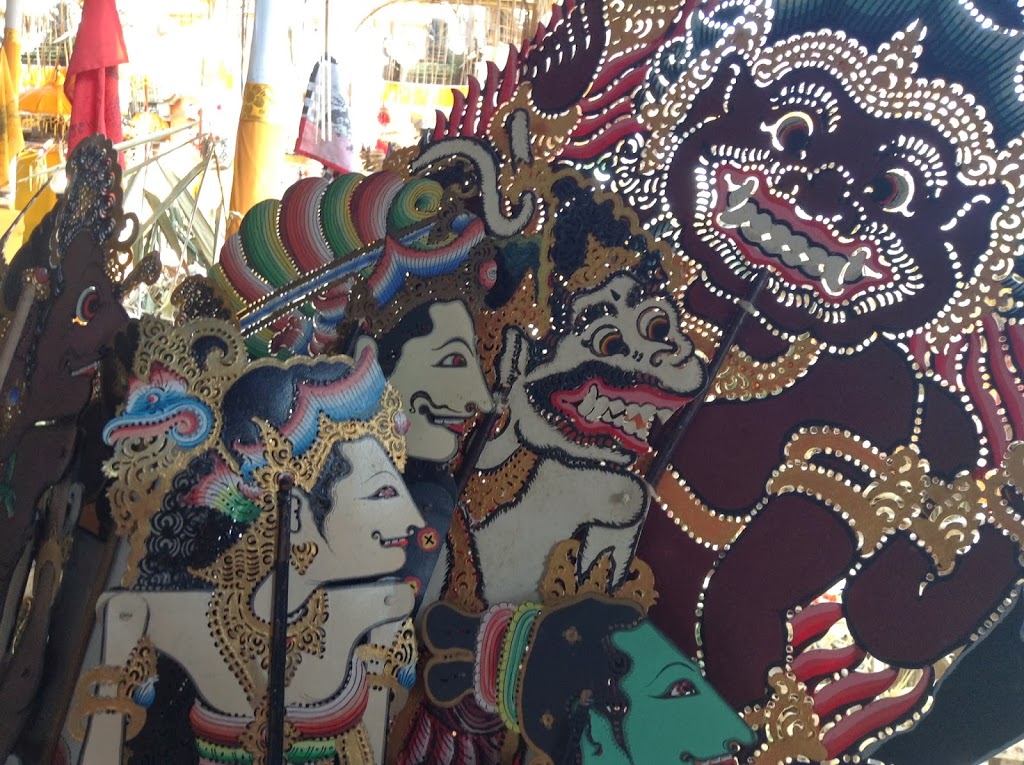 |
| The puppet master gets his collection of hand made shadow puppets ready for his story telling of the Indian epic tale of Mahabarata |
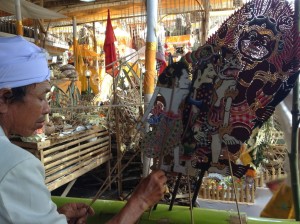 |
| 200 puppets make up the collection ~ here the puppeteer chooses the ones he needs and sticks them into the banana tree trunk which serves as a “stage” |
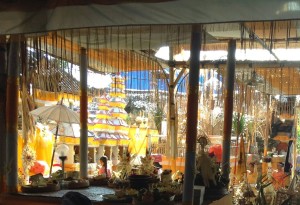 |
| The temple or “Pura” is the focus of spiritual activity of every Balinese Hindu community on the island. They are specially designed without roofs to allow the gods easy access between the worlds, with the gates and walls serving to keep impure and evil influences away |
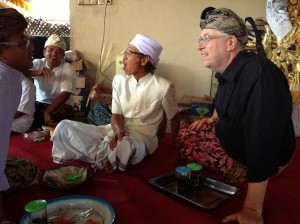 |
| Ben and the puppeteer before the show begins. |
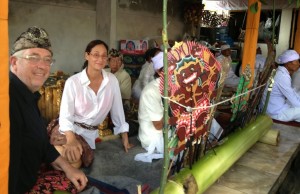 |
| We are seated behind the puppeteer once the ceremony begins inside the temple. |
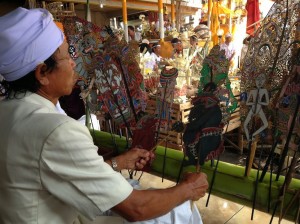 |
| The story told by way of puppets is done at the same time as the High Priest is singing, others praying, pounding of the wooden drums…. much goes on at the same time. |
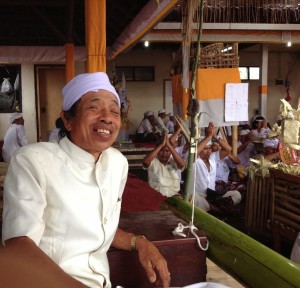 |
| Many things were happening at the same time. Here the puppeteer relaxes once his part is complete. |
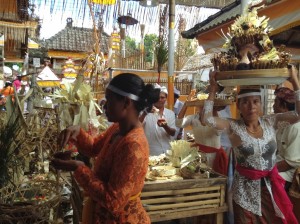 |
| Women with elaborate offerings, often including sacrificial animals such as cooked chickens, small pig. |
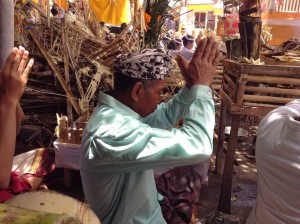 |
| After the high level of ceremonial activity and competing music, sermons and story telling, a moment of silence and quiet prayer. |
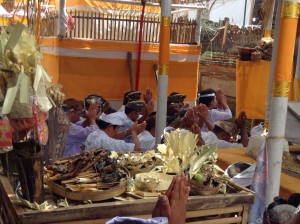 |
| Hands unite in prayer as the ceremony draws to a close after a five hour event. |
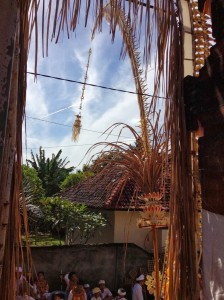 |
| Bamboo poles create natural arches as well as decorative shrines for offerings at the entrance to the temple. |
Inner courtyard – a quick peek before the ceremonies, as we won’t be allowed in as non members of the temple once the rites begin
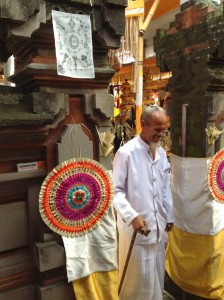 |
| High priests always wear all white. |
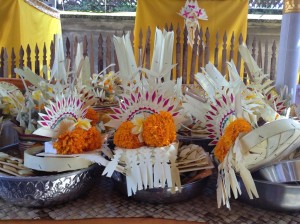 |
| A close up of a few offerings of bright orange marigolds and woven palm leaves. |
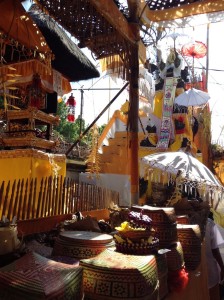 |
| Woven baskets of offerings, umbrellas and sculptures draped in ceremonial cloth. |
 |
| The offerings for ceremonies are much more elaborate than those that are made and put out daily in front of houses and shops. |
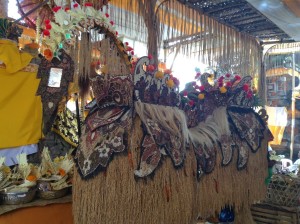 |
| A beautifully made mythological creature, made of an assortment of seeds and beans. |
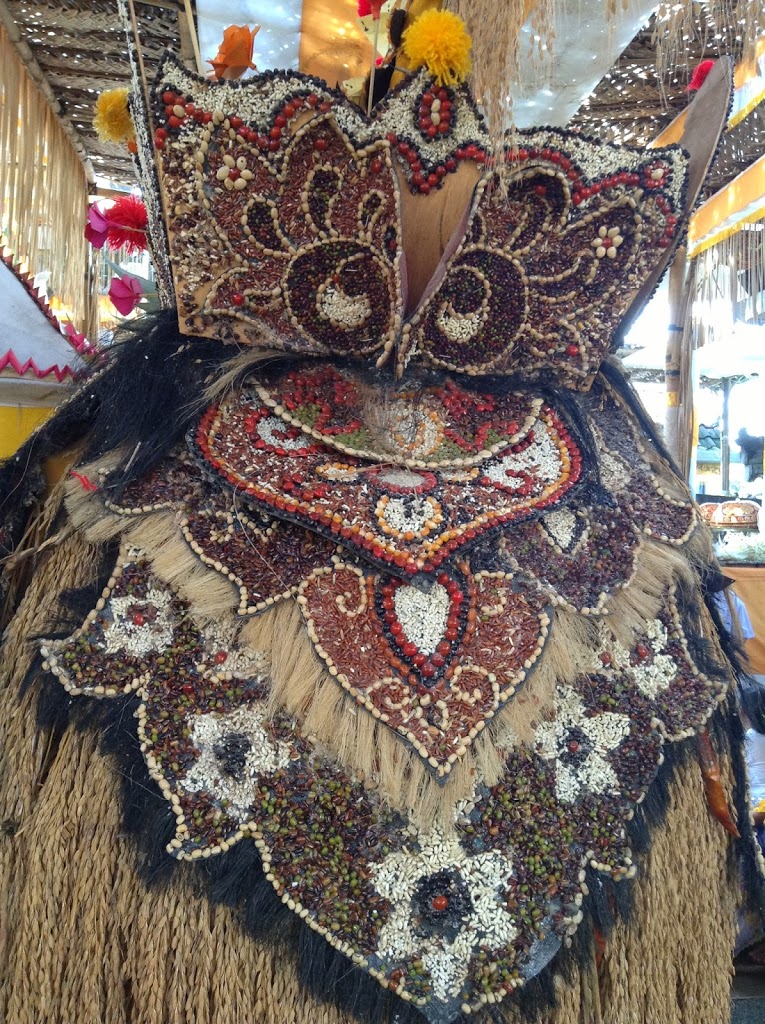 |
| Earth toned seeds and nuts create this effigy. |
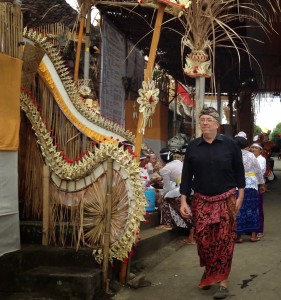 |
| Ben at the entrance to the temple with its intricately woven decorations. |







































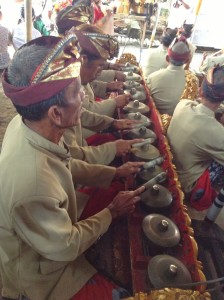

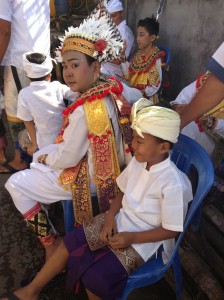


This is truly unbelievable…Magnificent colors and costumes. The children are adorable…Thank you for an unforgettable virtual world tour..I would never have visited all these amazing countries ..
Much love to both.
This was a once in a lifetime experience which has been a great part of our introduction to life in Bali!
The ceremonial and spiritual world is omnipresent … from the simple smell of incense, sticky rice and blossoms in the early mornings, to the piles of offerings that accumulate outside houses and stores each day.
This unique experience though to attend a holy rare festival, is one that will stay with us for the rest of our lives! One of those incredible once in a lifetime opportunities!
Thanks for your comments JB! So glad you enjoyed this post.
Pingback: Buddhism in our neighborhood ~ Delawalla, Sri Lanka. – Empty Nesters on a Green Global Trek